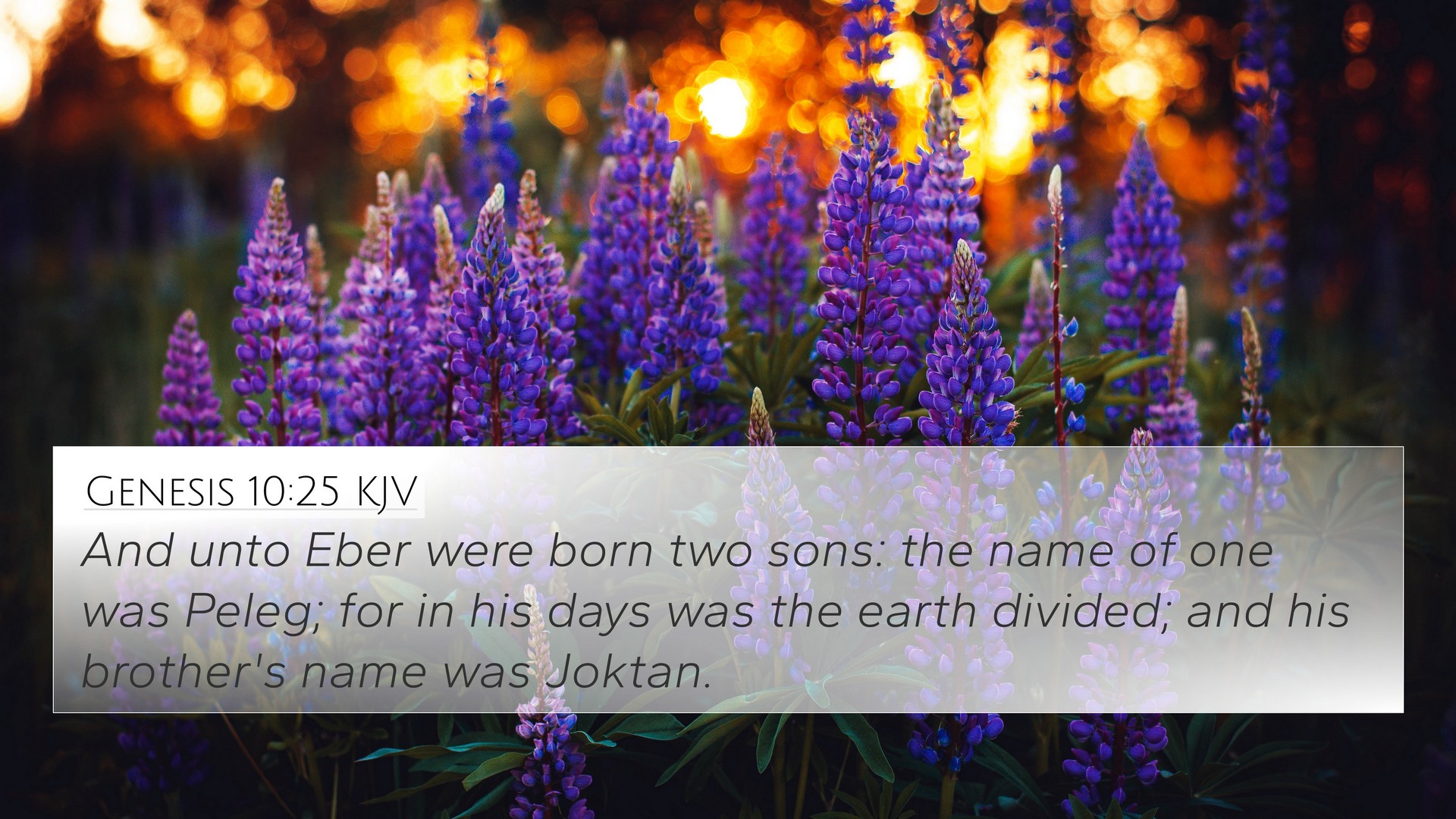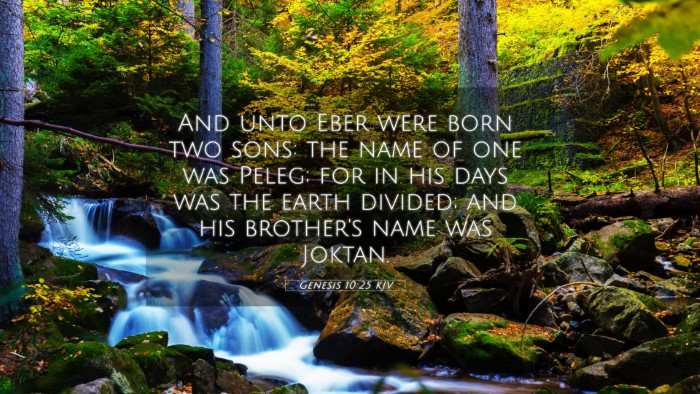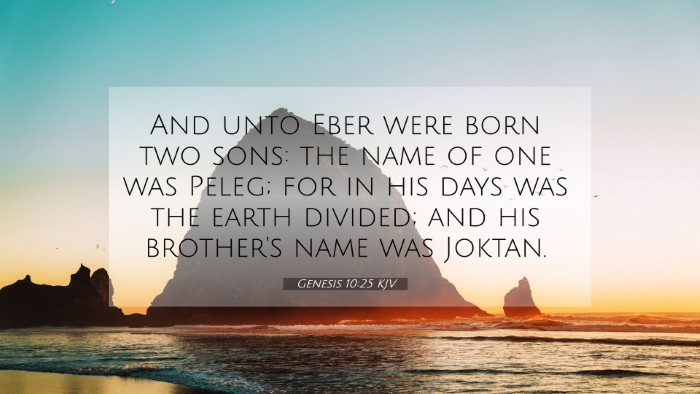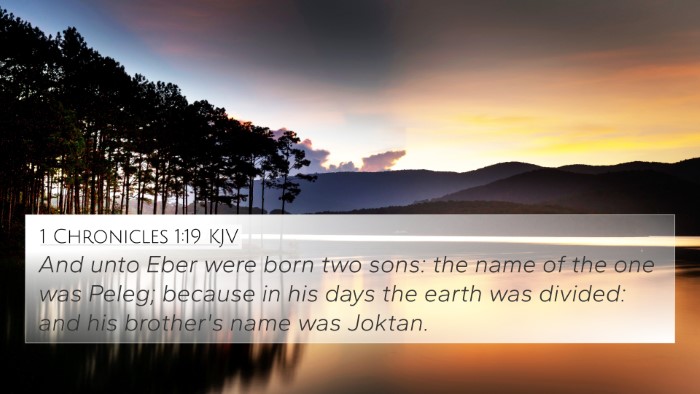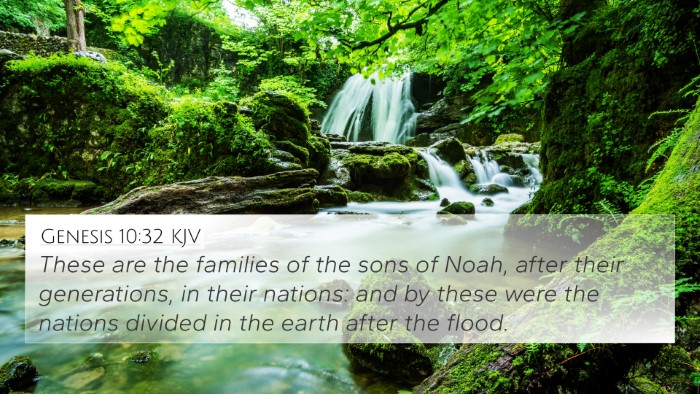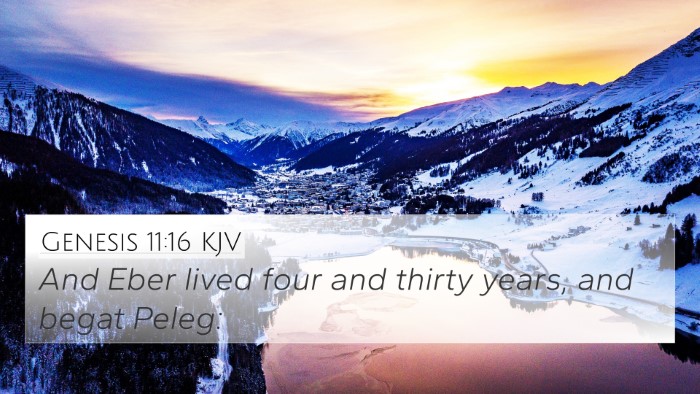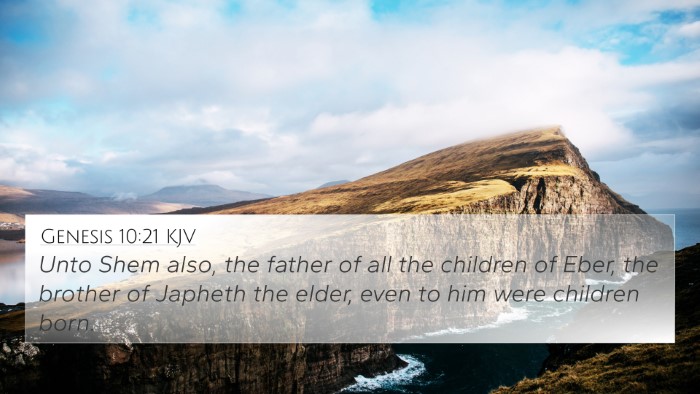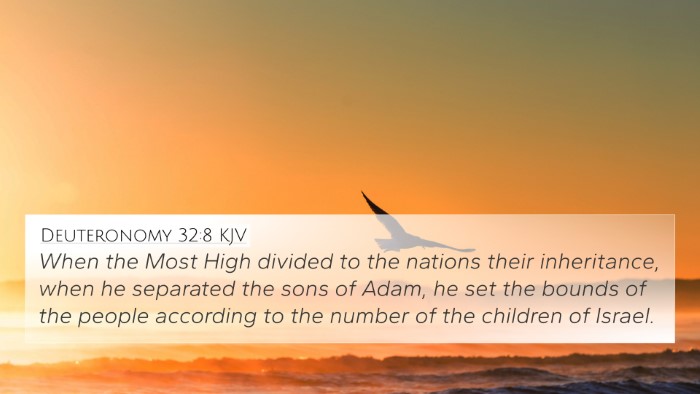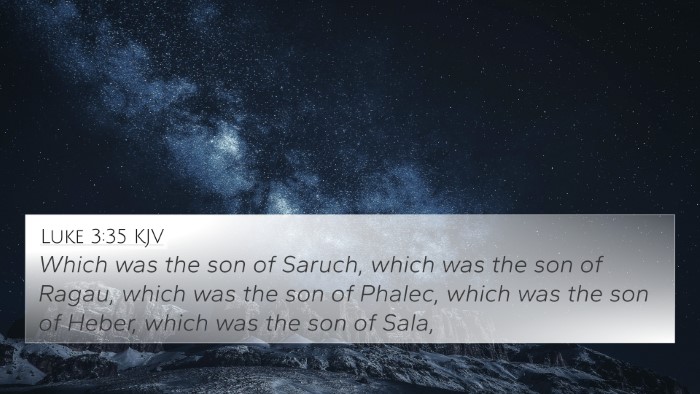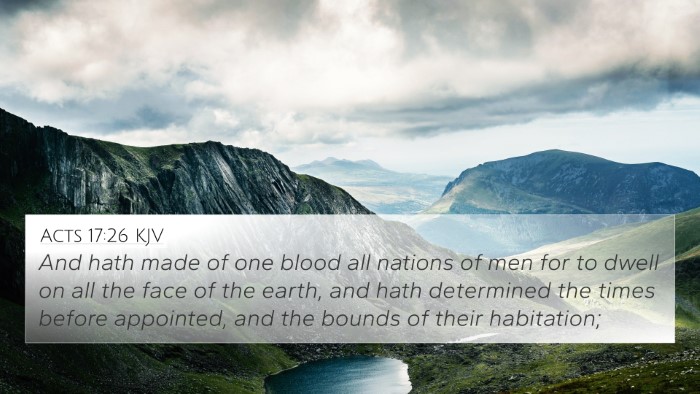Understanding Genesis 10:25
Genesis 10:25 states: "And unto Eber were born two sons: the name of one was Peleg; for in his days was the earth divided; and his brother's name was Joktan."
This verse is significant as it delineates the lineage of the Israelites and foreshadows historical and theological narratives that emerge later in the Bible. The naming of Peleg, which means "division," indicates an important event during his lifetime—the division of the earth. This event can be interpreted both literally and metaphorically, serving as a pivotal marker in biblical history.
Key Themes and Interpretations
- Lineage and Heritage:
This verse is a continuation of the genealogical accounts in Genesis, demonstrating the importance of lineage within the biblical narrative. Matthew Henry notes that tracing family lines not only preserves history but also establishes God’s promises through generations.
- Divine Intervention:
Albert Barnes comments on the division of the earth, suggesting it may refer to a significant geographical or cultural division that aligns with God's providential plans. It is seen as part of God's governance of humanity.
- Symbolism of Names:
Adam Clarke highlights the importance of names in the Bible, with Peleg being a name that signifies division or separation. This ties to the overarching theme of dispersal that recurs throughout scripture.
- Historical Context:
The mention of Peleg and the earth's division can invoke thoughts of the Tower of Babel (Genesis 11), where God confounded languages, thereby creating a division among people which has lasting implications throughout the biblical narrative.
- Theological Implications:
This division can also be viewed theologically, representing humanity's separation from God post-fall and the subsequent plan for reconciliation through Christ.
Bible Verse Cross-References
Genesis 10:25 connects with several other biblical passages that explore themes of lineage, division, and God's plans for humanity. Here are 8 important cross-references:
- Genesis 11:1-9: The Tower of Babel narrative highlights the theme of division among nations because of humanity's pride.
- Genesis 12:1-3: God's covenant with Abraham, emphasizing the promise of a great nation, contrasting the division in Genesis 10.
- Numbers 24:17: A prophecy referring to Israel's coming division and subsequent rise, representing God's sovereignty over nations.
- Acts 17:26: Paul speaks of God creating nations from one blood, noting the significance of human lineage in God’s plan.
- Romans 5:12: The introduction of sin into the world causing separation between God and humanity can be paralleled with the division in Genesis 10:25.
- Revelation 7:9: A picture of unity among nations before God, showcasing the ultimate reconciliation of humanity despite initial divisions.
- Matthew 1:1-17: The genealogy of Jesus, showing the continuity of God’s plan through lineage, connecting back to themes in Genesis 10.
- Hebrews 7:14: Reference to the tribe of Judah that comes from Abraham, tying back to the promises made in Genesis.
Tools for Bible Cross-Referencing
To deepen your understanding of biblical connections, consider utilizing a Bible concordance or a cross-reference Bible study guide. Some helpful methods include:
- Utilizing a Bible cross-reference system to trace themes and ideas across books.
- Employing cross-reference Bible study methods to engage with similar passages.
- Referencing Bible reference resources for insight on thematic links.
- Considering Bible chain references to follow a topic through various scripture texts.
Conclusion
Genesis 10:25 offers a rich tapestry to explore the connections between biblical genealogies and the larger narrative of salvation history. As we consider the implications of the names Peleg and Joktan, we see how they fit into God's sovereign plan for humanity. By understanding these connections, we can engage more deeply with the scriptures and appreciate the intricate design woven throughout the biblical text.
